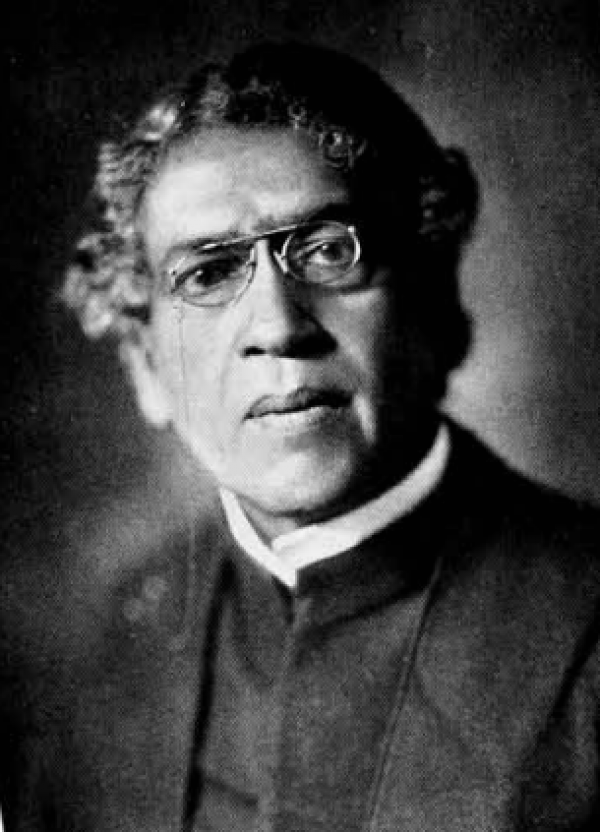CAN PLANTS SENSE AND REASON?

It has now been established that plants and trees are sentient beings endowed with feelings and consciousness. Thousands of people who talk to their pet plants daily while they are watering them or bathing their petals may tell us that these plants grow at a faster speed than usual and blossom early. This tends to prove the hypothesis that plants are sensitive to human emotions.
“You have nothing to fear. You don’t need your defensive thorns. I will protect you and hold your lives in very great regard and affection”, Luther Burbank, the eminent American botanist from Santa Rosa, California, used to say this to his plants. He affirmed that the plants could understand his words of endearment and respond to these gentle and loving remarks.
Burbank (1849-1926) was famous for his nurseries and he succeeded in developing a spineless cactus (useful for cattle-feed) and the plumcots (hybrids between different species of plums, peaches, etc.) . He is credited with developing more than 800 strains and varieties of plants, including fruits, flowers, grains, grasses and vegetables. His experiments in the field of agricultural science, spanning many years, earned him the name the “Wizard of Horticulture”. Burbank also propounded the theory that plants have more than twenty sensory perceptions.
Another famous scientist who conducted experiments in the 1900s on the ‘twenty sensory perceptions of the plants’ was the Indian botanist and physicist Sir Jagdish Chandra Bose (1858-1937) who is considered the father of Bengali science fiction. Being professor of physics at Presidency College, Calcutta, in British India, he discovered that although plants are devoid of a nervous system or a brain, they respire and digest food. Plants can move as well without there being any muscles. In the early 20th century Bose invented crescograph, a device for measuring the growth in plants. Later he made a number of pioneering discoveries in plant physiology. A crater on the moon has been named in his honour.
The experiments of Burbank and Bose have established beyond any shadow of doubt that plants, like animals, react to stimuli. The responses given out by plants were similar to the responses of animals. Seemingly, there is a close resemblance between the skins of reptiles and amphibians on the one hand and the skins of plants of fruits and vegetables on the other. Plants too get tired of ‘continuous stimulation’ as in the case of animals. The leaves of the plants respond to light just as the eyes of the animals do to the same stimulus. Plants could also be rendered ‘unconscious’ if chloroform was administered.
Botanical research has demonstrated that plants are capable of responding to a broad range of stimuli: chemicals, oxygen and carbon dioxide concentrations, light, temperature, moisture, gravity, infections, parasite infestation, disease, physical disruption, sound and vibrations and touch.
Cleve Backster (1924-2013), a New York polygraph expert and an interrogation specialist with the CIA (Central Intelligence Agency), found that when he attached the electrodes from the machine to the leaves of a plant, it responded to his thoughts and intentions. Once he thought idly about burning the plant, and the needle on the graph paper fluctuated wildly.
Pierre Paul Sauvin, an officer of the International Telephone and Telegraph in New Jersey, U. S. A., had a radio transmitter attached to his leg under the trousers. Through this transmitter he would talk to his pet plants at home in a very affectionate manner. His conversation would last for a few minutes and he would also listen to the responses he received from the plants.
Research conducted by Professor June Nasrallah discovered that the plants’ pollination mechanism also serves as a mechanism against self-reproduction that bears scientific evidence that plants could be regarded as self-aware organisms. Nasrallah received her B. Sc. degree in Biology from the American University of Beirut, Lebanon and her Ph. D. in Genetics from Cornell University, New York.

Luther Burbank 
Sir Jagdish Chandra Bose
Plants’ reaction to music
Dorothy Retallack, another lady scientist from Denver, in the U. S. state of Colorado, performed experiments in 1968, taking a mixed group of plants consisting of philodendron, corn, beans, radishes, pelargoniums and African violets. The musical notes were played on the piano and the ‘sitar’ (a plucked stringed instrument used for Hindustani classical music) for twelve hours a day. After a period of three weeks, she observed that petals turned towards the source of music and seemed to flourish, recording an accelerated growth. The classical music of German composer and musician Johann Sebastian Bach (1685-1750), Austrian composer Franz Joseph Haydn (1732-1809) and the East Indian ‘sitar’ music had created positive effects on the plants. Retallack also noted that when her plants were forced to listen to acid ‘rock music’ (originating from black American music in the U. S. in the late 1940’s) on her record-player they ‘cringed’ and ‘died’ except the African violets. Folk music and jazz (originating in the African-American communities of New Orleans, U. S. A.) seemed to have a neutral effect on the growth of plants. The plants which were in the ‘control’ group and were not subjected to noise, had grown normally.
Does prayer help plants to grow? Many plant owners would swear that this is true. In the Power of Prayer over Plants, the Rev. Franklin Loehr describes a series of 700 experiments by 150 persons with 27,000 seeds. The seeds that had received the prayer treatment grew more rapidly than the ‘control’ group of seeds that were ignored.
Some psychics claim that they can see auras, supposed emanations surrounding not only people and animals but also plants. Ethel DeLoach of Morristown, New Jersey, has spent hours watching the aura of a leaf as it dies. When the leaf is cut in half, the auras of the two halves reach out to each other. When the leaf is dead, the aura is gone. The Kirlian process developed in Russia has photographed auras of many living organisms, including plants. Kirlian photography is a collection of photographic techniques used to capture the phenomenon of electrical coronal discharges, named after Semyon Davidovich Kirlian (1898-1978), Soviet inventor of Armenian descent, who made the discovery accidentally in 1939. A coronal discharge is an electrical discharge caused by the ionisation of a fluid such as air surrounding a conductor carrying a high voltage.
Banyan tree and basil plant
There is a particular day in the month of June when the married women in India worship the banyan tree (Ficus benghalensis, native to the Indian Subcontinent and ranked among the largest trees in the world by canopy coverage) and pray for the long life of their husbands. The women are attired in an elaborate dress, keep a fast and go to the banyan tree, which is the National Tree of India, and entreat it to protect their husbands from all dangers and grant them a life of happiness and prosperity. Should there be any other expectations or hopes to be fulfilled, the same may be spoken of to the tree. It is firmly believed that the tree listens to the words of the ladies and responds accordingly. Similarly, the basil plant is worshipped almost daily by the devotees, praying for protection of the family in times of difficulty.
Carnivorous plants
The fact that plants can perform and direct conscious activities is corroborated well by their ability to entrap and kill insects and arthropods (invertebrate animals) as a source of nutrients for their survival. These carnivorous plants have adapted to grow in places where the soil is poor in nutrients, especially nitrogen. They can be found on all continents and many Pacific islands except Antarctica.
Carnivorous plants execute certain movements when solid bodies come into contact with them or touch or strike their surfaces. Many such plants have developed this irritability to contact or impact and entrap and hold insects as an unsuspecting prey. The tendrils of climbing plants coil around supports and lift the foliage and flowers into sunlight. Many ‘sensitive’ plants quickly fold their leaves when they receive a stimulus, thus avoiding injury from hail or grazing animals.
Five basic trapping mechanisms are found in carnivorous plants:
- Pitfall traps that capture insects in a rolled leaf that contains a pool of digestive enzymes or bacteria [eg Mulu pitcher plant (Nepenthes muluensis), endemic to Borneo].
- Flypaper traps that use a sticky mucilage (thick, gluey substance) (e.g. Sundew or Drosera, native to every continent).
- Snap traps that perform rapid leaf movements [eg Sleepy plant or Touch-me-not Shameplant (Mimosa pudica), now a pantropical weed].
- Bladder traps that suck prey into a bladder that generates an internal vacuum where the aquatic invertebrates are digested (e.g. Utricularia vulgaris, a free-floating plant found in Asia and Europe).
- Eel traps that use inward-pointing hairs or bristles to force prey into a digestive organ [e.g. Corkscrew plant (Genlisea violacea), distributed throughout Africa and Central and South America]. ***





